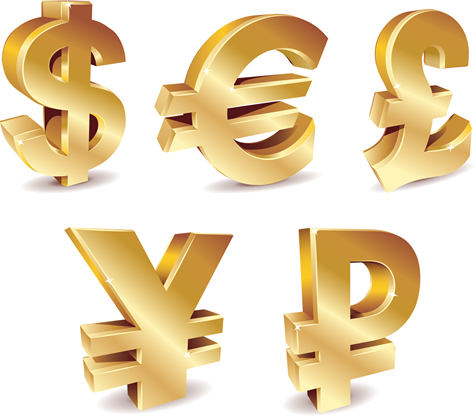What is a key currency?
A key currency is stable, fluctuates minimally and serves as the basis for exchange rates in global transactions. Because of their widespread use, key currencies influence the value of other currencies and maintain a consistent value over time.
A key currency traded globally belongs to a financially stable, developed, and economically powerful country.
Moreover, Key currency rates fluctuate daily, and financial reporting channels and financial organisations display the most up-to-date key currency values.
Summary
- A key currency is stable, fluctuates minimally and serves as the basis for exchange rates in global transactions.
- Key currencies have a strong influence on the value of other currencies and maintain a consistent value over time.
- Other nations could peg their currencies to a key currency, and international central banks typically keep them as reserves.
Frequently Asked Questions (FAQs)
What is the importance of a key currency?
The term "key currency" refers to significant currencies used as a reference in financial trade in the global economy.
Smaller countries' exchange rates are influenced by central banks' holdings of key currencies as reserve currencies. An exchange rate denotes the value of one nation's currency concerning another nation's currency, and it involves both foreign and domestic currency.
However, reserve currencies may or may not always be considered as the key currency. Still, they aid in paying foreign debt obligations, completing global transactions, and supporting investments.
Furthermore, nations retain key currencies for various purposes, including payment for various globally traded commodities like gold and oil and influence their domestic exchange rate. Setting the national currency to a key currency limits the monetary policy's flexibility; it boosts trust in its economy.
Additionally, when various countries agree on a deal, they usually utilise a key currency for transaction purposes to minimise the risk of currency exchange rate fluctuations during the deal's lifespan.
Developing and underdeveloped countries that do not retain key currencies often peg their national currencies to key currencies to facilitate international trade and maintain economic stability. Nations with less-dominant economies will align their exchange rates with the leading trade partner as a financial procedure.

Source: © Annadrozd | Megapixl.com
What are the seven major key currencies?
- The U.S. Dollar (USD) – The United States of America's official currency is the United States dollar (USD), which is comprised of 100 cents and denoted by the symbols US$ or $ to distinguish it from other dollar-based currencies.
Furthermore, the U.S. dollar is regarded as a benchmark currency and is the most widely utilised currency in international payments. The use of the USD is not confined to the United States; numerous territories outside of the United States utilise it as their official currency. Also, several nations make use of it along with their own as an unofficial currency.
The United States dollar has climbed to the peak of all other currency units globally during the last seven decades by emerging into an international medium of exchange, fostering global trade and investment in a more secure environment.
So, here's how the U.S. dollar got to number one as the world's most significant currency. The United States' hegemony in global commerce, foreign direct investment, gross domestic product (GDP), capital flows, and currency stability are the primary factors that lead to it becoming a preferred choice for firms and investors.
Notably, any nation has chosen to invest in U.S. dollar-denominated assets because of their global worth and stability. It also can offer the most liquid bond market.
Moreover, treasuries are regarded as the world's best risk-free asset, with U.S. treasuries yielding more than European and Japanese treasuries.
- The Euro (EUR)- It is the official currency of the European Union (E.U.), with the symbol €, and is regarded as the world's second most key currency after the U.S. dollar due to its extensive use.
Furthermore, the European Economic and Monetary Union (EMU) is made up of 27 countries, 19 of which have embraced the Euro as their official currency.
There are several significant advantages to using the Euro as the official currency, including removing exchange rate risk for financial institutions and eurozone companies doing business in an increasingly globalised economy.

Source: Kalkine Media
3- The British Pound (GBP) - It is the acronym for the British pound sterling, a currency that has been widely utilised in various regions of the globe.
Moreover, GBP is the official currency of the United Kingdom, the British Overseas Territories of South Georgia, the British Antarctic Territory, the South Sandwich Islands, the Channel Islands and the Isle of Man, which are crown dependencies of the United Kingdom. Apart from these regions, the pound is also utilised in Zimbabwe, an African nation.
The British pound, denoted by the symbol £, has one of the world's most significant trade volumes. GBP accounts for approximately 13% of daily trading volume in foreign exchange markets.
- The Japanese Yen (JPY) - The Japanese yen is Japan's official currency and is denoted by the symbol ¥. Along with the pound sterling, Euro, and U.S. dollar, it is extensively used as a reserve currency. The yen's growth is generally attributed to the booming Japanese economy and the growth of the U.S. dollar.
- Canadian Dollar (CAD) - The currency symbol C$ stands for the Canadian dollar, which comprises 100 cents. However, the symbol C$ distinguishes CAD from other currencies denominated in dollars, such as the U.S. dollar, and CAD is often known as the "loonie".
- Swiss Franc (CHF)- The Swiss franc, abbreviated as CHF, is the recognised legal tender of Liechtenstein and Switzerland. After the other nations, the CHF is the only franc that is still printed in Europe, and its value derives from its status as a reliable haven currency.
- The Mexican Peso (MXN) - Since the nation's independence in 1821, the peso has been the official currency of Mexico.
 Please wait processing your request...
Please wait processing your request...